#landsknecht
Explore tagged Tumblr posts
Text
Leaving aside the short shorts of the 80s, there was also the German Landsknechts. Mercenaries who were specifically exempted from the sartorial laws of the Holy Roman Empire and used the excuse to dress like slutty clowns.
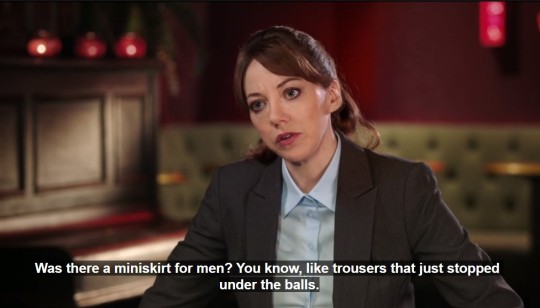
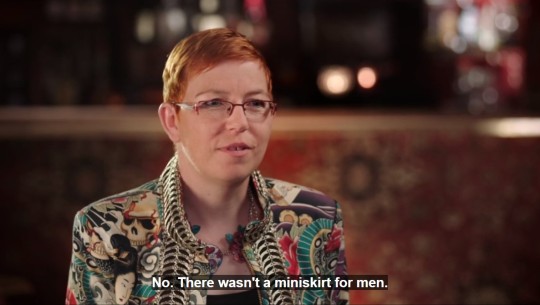



62K notes
·
View notes
Text








Gabe Freeland took some lovely photos of us at Momocon!
#our cosplay#mario and Luigi go to war#mario brothers#momocon#momocon 2024#mario#luigi#finished costumes#con photos#landsknecht
18K notes
·
View notes
Text




Last day at the festival !
9K notes
·
View notes
Text
Landsknechte-centric RPG where your equipment slots are perfunctory for the upper body and hyper-detailed for the lower body, rather than the other way 'round as is customary. Like, for the upper body you've basically just got "head" and "chest", and then for the lower body you have separate equipment slots for hose, garters, pantaloons, belt, belt pouch, boots, boot tassels, codpiece, codpiece accessory, and those little ribbons you tie about your knees.
2K notes
·
View notes
Text



⚜️ Landsknecht armor, ca. 1520-1540
Made in our Creative Workshop "Steel Legacy"
⠀
Photo by Sergey Kozlov
⠀
- -
⚜️ Доспехи Ландскнехта, около 1520-1540 гг.
Изготовлены в нашей Художественной Мастерской "Стальное Наследие"
⠀
Фото: Сергей Козлов
#medieval#средневековье#middleages#history#armor#armours#история#harnisch#armadura#armour#landsknecht#доспехи#ландскнехт
588 notes
·
View notes
Text

Landsknecht Miku by ncrgray
293 notes
·
View notes
Text

So I got this tag on my answer to an ask about when it became acceptable for western women to wear pants, and you know it's all I need to go on a tangent.
I think the short answer here would be men have worn skirts as long as people have worn anything, so pretty long tbh. But since I am incapable of answering anything shortly, I think we can re-frame this question:
When did skirts stop being socially acceptable for men?
So let's start with acknowledging that tunics, togas, kirtles and such men wore through history were, in fact, skirts. I think there's often a tendency to think of these as very different garments from those that women wore, but really they are not. Most of the time they were literally referred to with the same name. (I will do a very broad and simplified overview of men's clothing from ancient times to Early Middle Ages so we can get to the point which is Late Middle Ages.)
Ancient Greek men and women both wore chitons. Even it's length wasn't determined by gender, but by occupation. Athletes, soldiers and slaves wore knee-length chitons for easier movement. Roman men and women wore very similar garment, tunics. Especially in earlier ancient Rome long sleeves were associated with women, but later became more popular and unconventional for men too. Length though was still dependent on occupation and class, not gender. Toga was sure men's clothing, but worn over tunic. It was wrapped around the waist, like a dress would, and then hung over shoulder. Romans did wear leggings when they needed to. For example for leg protection when hunting as in this mosaic from 4th century. They would have been mostly used by men since men would be doing the kinds of activities that would require them. But that does not lessen the dressyness of the tunics worn here. If a woman today wears leggings under her skirt, the skirt doesn't suddenly become not a skirt.

All over Europe thorough the early Middle Ages, the clothes were very similar in their basic shape and construction as in Rome and Greece. In Central and Northern Europe though people would wear pants under shorter tunics. There were exceptions to the everyone wearing a tunic trend. Celtic men wore braccae, which were pants, and short tunics and literally just shirts. Celts are the rare case, where I think we can say that men didn't wear dresses. Most other peoples in these colder areas wore at least knee-length tunics. Shorter tunics and trousers were worn again mostly by soldiers and slaves, so rarely any other woman than slave women. The trousers were though definitely trousers in Early Middle Ages. They were usually loose for easier construction and therefore not that similar to Roman leggings. However leggings style fitted pants were still used, especially by nobility. I'd say the loose trousers are a gray area. They wore both dresses and pants, but still definitely dresses. I'd say this style was very comparable to the 2000s miniskirts over jeans style. First one below is a reconstruction of Old Norse clothing by Danish history museum. The second is some celebrity from 2005. I see no difference.
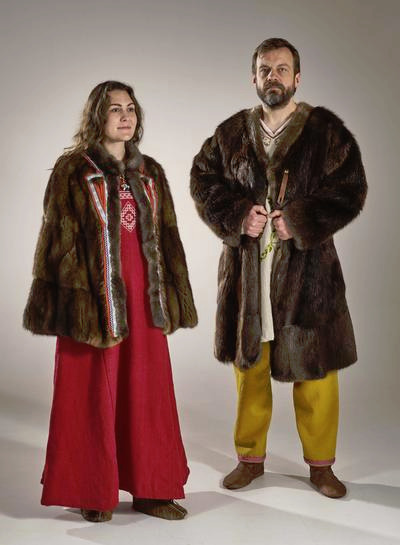
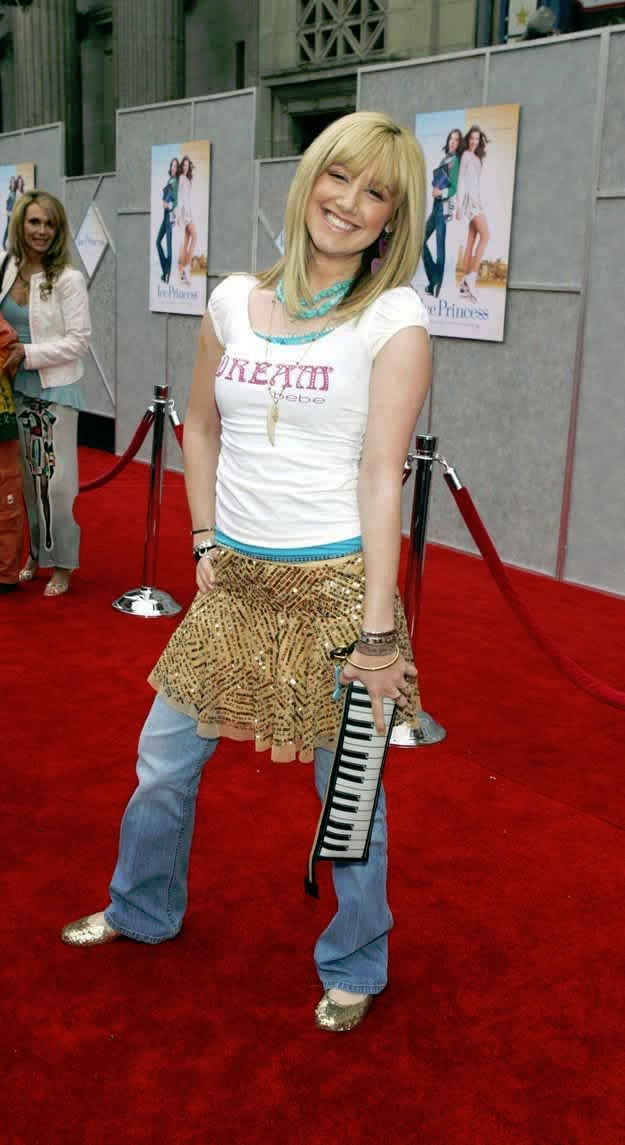
When we get to the high Middle Ages tunics are still used by both men and women, and still it's length is dependent on class and activity more than gender, but there's some new developments too. Pants and skirt combo is fully out and leggings' are back in in form of hose. Hose were not in fact pants and calling them leggings is also misleading. Really they are socks. Or at least that's how they started. As it has become a trend here they were used by everyone, not just men. During early Middle Ages they were worn often with the trousers, sometimes the trousers tucked inside them making them baggy. In high Middle Ages they became very long when used with shorter tunics, fully displacing the need for trousers. They would be tied to the waist to keep them up, as they were not knitted (knitting was being invented in Egypt around this time, and some knitting was introduced to Europe during middle Ages, but it really only took off much later during Renaissance Era) and therefore not stretchy. First picture is an example of that from 1440s. Another exciting development in the High Medieval era was bliaut in France and it's sphere of influence. Bliaut was an early attempt in Europe of a fitted dress. And again used by both men and women. The second illustration below from mid 12th century shows a noble man wearing a bliaut and nicely showing off his leg covered in fitted hose. Bliaut was usually likely fitted with lacing on the sides, but it wasn't tailored (tailoring wasn't really a thing just yet) and so created a wrinkled effect around the torso.
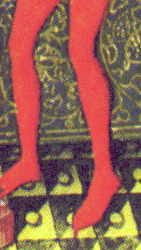

In the 14th century things really picked up in European fashion. European kingdoms finally started to become richer and the rich started to have some extra money to put into clothing, so new trends started to pop up rapidly. Tailoring became a thing and clothes could be now cut to be very fitted, which gave birth to fitted kirtle. At the same time having extra money meant being able to spend extra money on more fabric and to create very voluminous clothing, which gave birth to the houppelande.
Kirtle was once again worn by everyone. It wasn't an undergarment, for women that would be shift and men shirt and breeches, but it was an underlayer. It could be worn in public but often had at least another layer on top of it. The bodice part, including sleeves were very fitted with lacing or buttons (though there were over-layer kirtles that had different sleeves that changed with fashions and would be usually worn over a fitted kirtle). Men's kirtles were short, earlier in 14th century knee-length but towards the end of the century even shorter styles became fashionable in some areas. First picture below shows a man with knee-length kirtle from 1450s Italy.
Houppelande was also unisex. It was a loose full-length overgown with a lot of fabric that was gathered on the neckline and could be worn belted or unbelted. The sleeves were also wide and became increasingly wider (for men and women) later in the century and into the next century. Shorter gowns similar in style and construction to the houppelande were also fashionable for men. Both of these styles are seen in the second picture below from late 14th century.
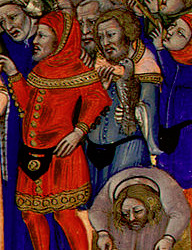
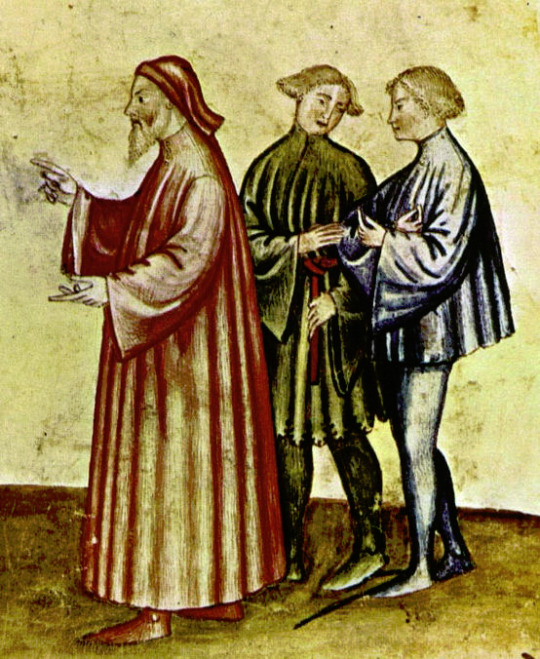
In the very end of 14th century, first signs of pantification of men can be seen. In France and it's sphere of influence the skirt part of the kirtle became so short it barely covered the breeches as seen below on these fashionable musicians from 1395-1400 France. Long houppelandes, length ranging from floor to calf, were still used by men though (the second picture, 1414 France), as were knee and thigh length gowns of similar loose style.

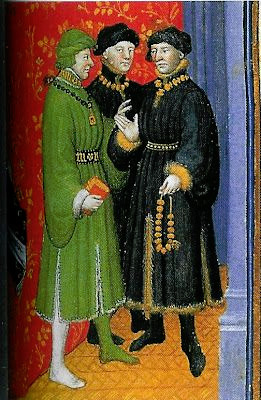
The hems continued to be short through the 15th century in France, but in other places like Italy and German sphere of influence, they were still fairly long, at least to mid thigh, through the first half of the century. In France at some point in late 13th century the very short under-kirtle started to be called doublet and they are just getting shorter in 1400s. The showing underwear problem was fixed by joined hose and the codpiece, signaling the entrance of The Sluttiest Era of men's fashion. Below is an example from 1450s Belgium of doublet and early codpiece in display. As you can see from the other figures, the overgowns of the previous century were also getting very, very short. In the next French example below from 1470s we can see the skirt shrink out of existence right before our eyes.
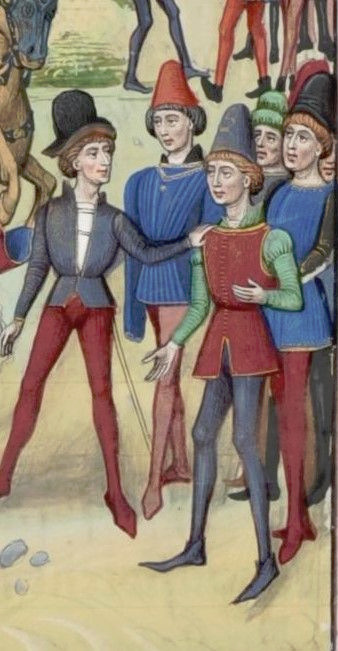
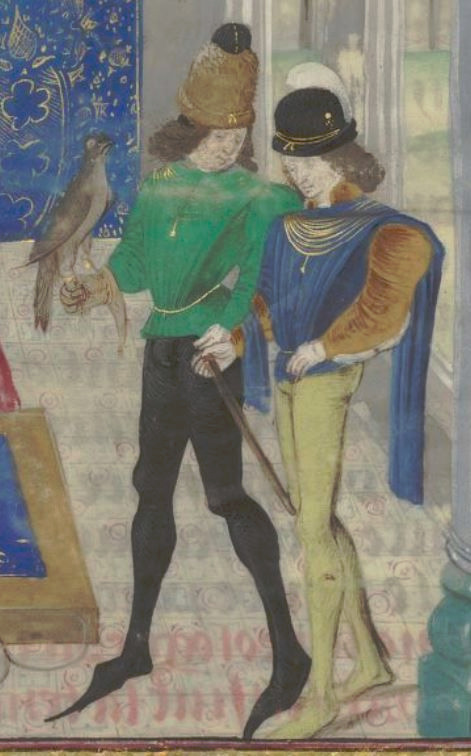
The very skimpy doublet and it's accompanying codpiece spread to the rest of the Europe in the second half of 15th century and it would only get sluttier from there. The Italians were just showing their full ass (example from 1490s). The dress was not gone yet though. The doublet and codpiece continued to be fashionable, but the overdress got longer again in the French area too. For example in the second example there's Italian soldiers in a knee length dresses from 1513.
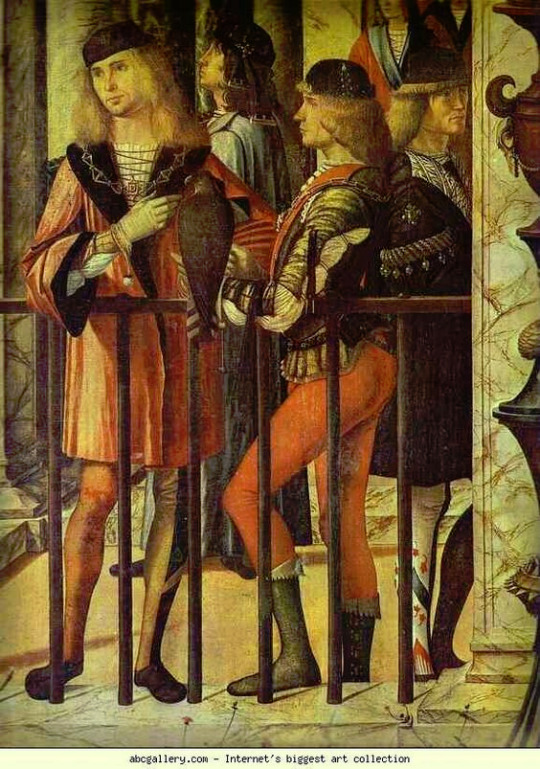

But we have to talk about the Germans. They went absolutely mad with the whole doublet and codpiece. Just look at this 1513 painting below (first one). But they did not only do it sluttier than everyone else, they also changed the course of men's fashion.
Let's take a detour talking about the Landsknecht, the mercenary pikeman army of the Holy Roman Empire. (I'm not that knowledgeable in war history so take my war history explanation with a grain of salt.) Pikemen had recently become a formidable counter-unit against cavalry, which earlier in the Medieval Era had been the most important units. Knights were the professional highly trained cavalry, which the whole feudal system leaned against. On the other hand land units were usually not made of professional soldiers. Landsknecht were formed in late 15th century as a professional army of pikemen. They were skilled and highly organized, and quickly became a decisive force in European wars. Their military significance gave them a lot of power in the Holy Roman Empire, some were even given knighthood, which previously wasn't possible for land units, and interestingly for us they were exempt from sumptuary laws. Sumptuary laws controlled who could wear what. As the bourgeois became richer in Europe in late Middle Ages and Renaissance Era, laws were enacted to limit certain fabrics, colors and styles from those outside nobility, to uphold the hierarchy between rich bourgeois and the nobles. The Landsknecht, who were well payed mercenaries (they would mutiny, if they didn't get payed enough), went immediately absolute mad with the power to bypass sumptuary laws. Crimes against fashion (affectionate) were committed. What do you do, when you have extra money and one of your privileges is to wear every color and fabric? You wear every color and fabric. At the same time. You wear them on top of each other and so they can be seen at the same time, you slash the outer layer. In the second image you can feast your eyes on the Landsknecht.

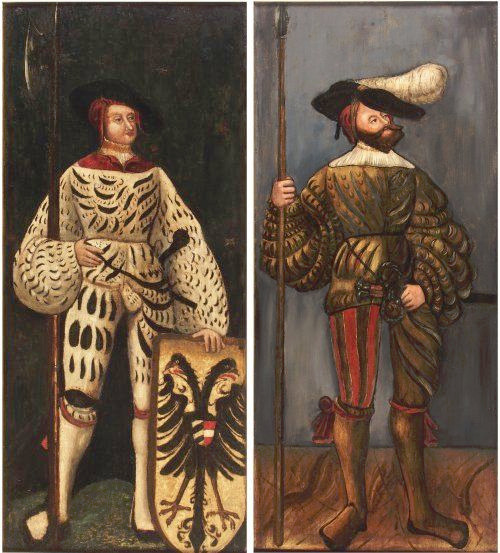
Just to give you a little more of that good stuff, here's a selection of some of my favorite Landsknecht illustrations. This is the peak male performance. Look at those codpieces. Look at those bare legs. The tiny shorts. And savor them.
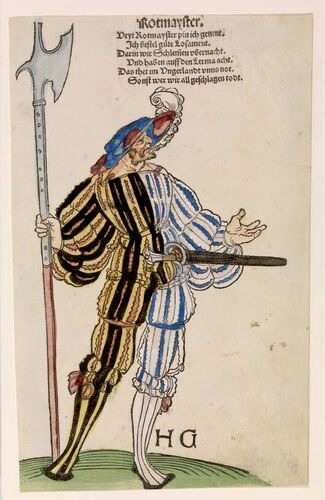
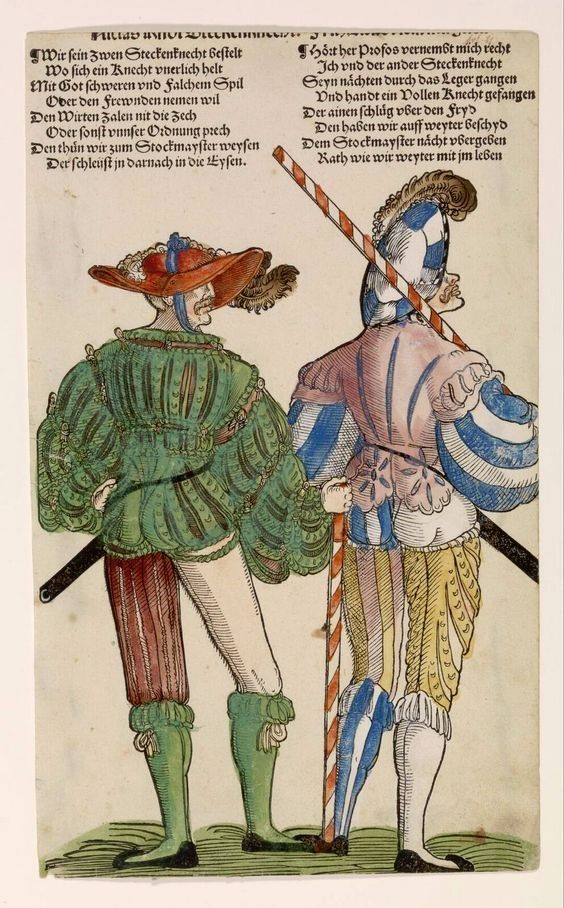
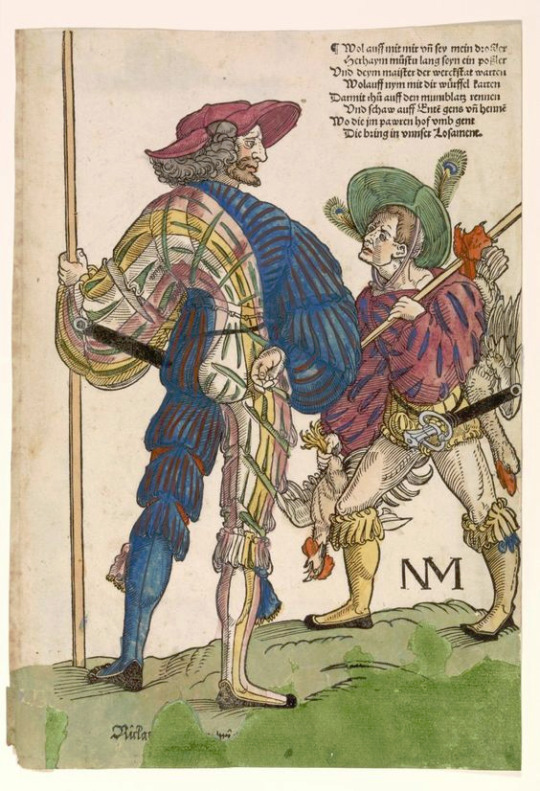
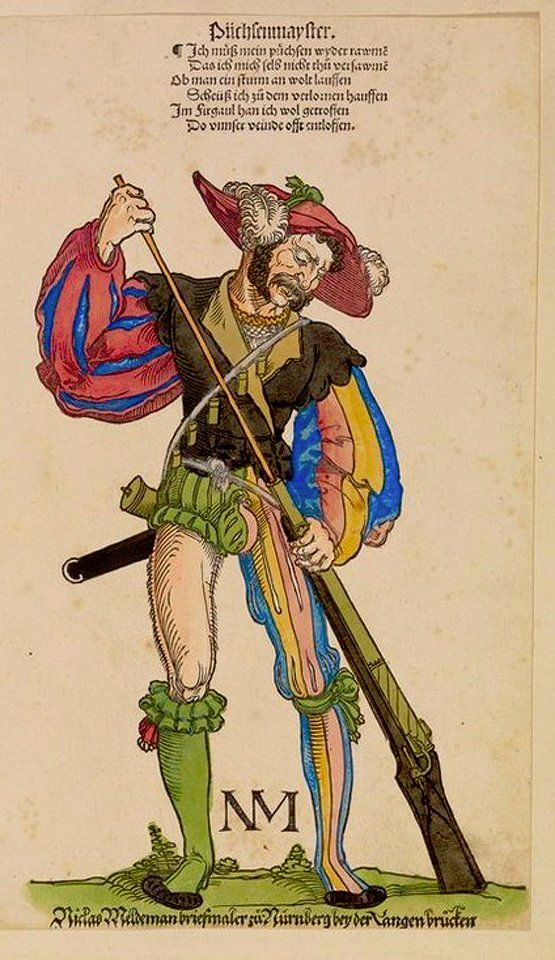
The Landsknecht were the hot shit. Their lavish and over the top influence quickly took over men's fashion in Germany in early 1500s. Slashing, the technique possibly started by them, but at least popularized by them, instantly spread all over Europe. That's how you get the typical Renaissance poof sleeves. They at first slashed the thighs of their hose, but it seems like to fit more of everything into their outfits, they started wearing the hose in two parts, upper hose and nether hose, which was a sort of return to the early Medieval trousers and knee-high hose style. The two part hose was adopted by the wider German men's fashion early in the century, but already in 1520s had spread to rest of Europe. It was first combined with the knee-length overdress that had made it's comeback in the turn of the century, like in this Italian painting from 1526 (first image). At this point knitting had become established and wide-spread craft in Europe and the stockings were born, replacing nether hose. They were basically nether hose, but from knitted fabric. The gown shortened again and turned into more of a jacket as the trunk hose became increasingly the centerpiece of the outfit, until in 1560s doublet - trunk hose combination emerged as the standard outerwear (as seen in the second example, 1569 Netherlands) putting the last nail on the coffin of the men's dress as well as the Sluttiest Era. The hose and doublet became profoundly un-slutty and un-horny, especially when the solemn Spanish influence spread all over with it's dark and muted colors.

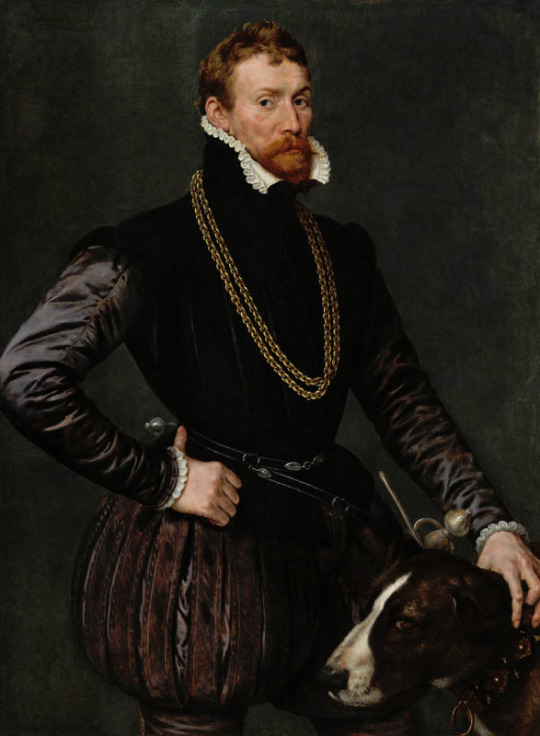
Especially in Middle Ages, but thorough European history, trousers have been associated with soldiers. The largely accepted theory is that trousers were invented for horse riding, but in climates with cold winters, where short skirts are too cold, and long skirts are still a hazard when moving around, trousers (with or without a short skirt) are convenient for all kinds of other movement requiring activities like war. So by adopting hose as general men's clothing, men in 1500s associated masculinity with militarism. It was not a coincidence that the style came from Landsknecht. I may have been joking about them being "peak male performance", but really they were the new masculine ideals for the new age. At the time capitalism was taking form and European great powers had begun the process of violently conquering the world for money, so it's not surprising that the men, who fought for money and became rich and powerful doing so, were idealised.
Because of capitalism and increasingly centralized power, the feudal system was crumbling and with it the feudal social hierarchy. Capitalism shifted the wealth from land ownership (which feudal nobility was built upon) to capital and trade, deteriorating the hierarchy based on land. At the same time Reformation and centralized secular powers were weakening the power of the Church, wavering also the hierarchy justified by godly ordain. The ruling class was not about to give up their power, so a new social hierarchy needed to form. Through colonialism the concept of race was created and the new hierarchy was drawn from racial, gender and wealth lines. It was a long process, but it started in 1500s, and the increasing distinction between men's and women's fashions was part of drawing those lines. At the same time distinctions between white men and racialized men, as well as white women and racialized women were drawn. As in Europe up until this point, all over the world (with some exceptions) skirts were used by everyone. So when European men fully adopted the trousers, and trousers, as well as their association to military, were equated with masculinity, part of it was to emasculate racialized men, to draw distinctions.
Surprise, it was colonialism all along! Honestly if there's a societal or cultural change after Middle Ages, a good guess for the reason behind it is always colonialism. It won't be right every time, but quite a lot of times. Trousers as a concept is of course not related to colonialism, but the idea that trousers equal masculinity and especially the idea that skirts equal femininity are. So I guess decolonize masculinity by wearing skirts?
#this has been sitting in my drafts almost finished for like a year or something#historical fashion#fashion history#fashion#history#dress history#men's historical fashion#renaissance fashion#medieval fashion#western fashion#western fashion history#landsknecht
3K notes
·
View notes
Text

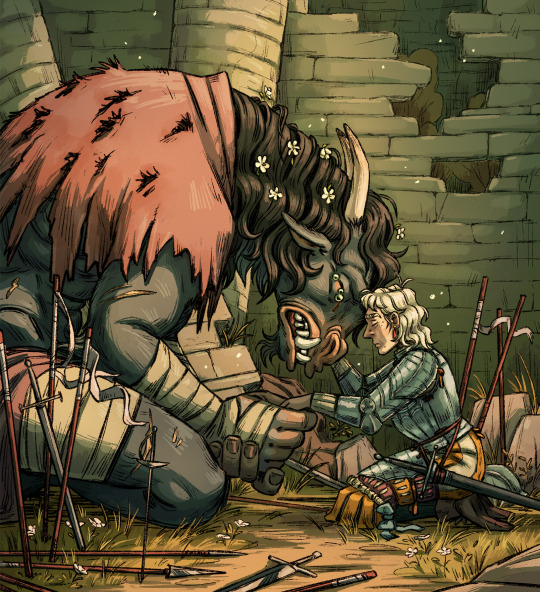
"...now let us heal thy wounds..." 🐃⚔️🌿
companion piece/part 2 to this illustration
2K notes
·
View notes
Text
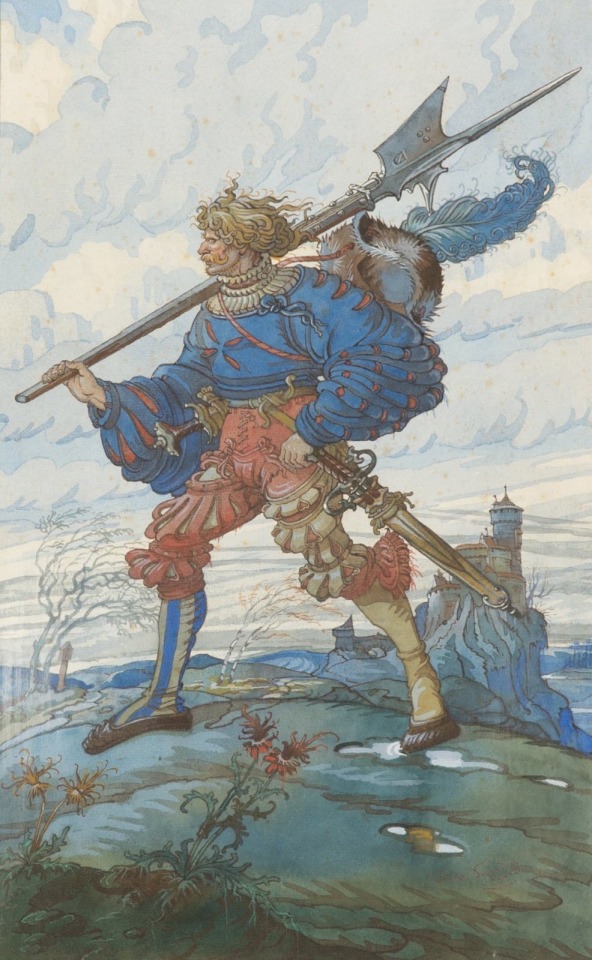
Landsknecht by Léo Schnug
#léo schnug#landsknecht#lansquenet#art#history#alsace#strasbourg#halberd#europe#european#lansquenets#landsknechts#renaissance#mercenary#mercenaries#soldier#soldiers#german#germanic#pike and shot#pikemen#middle ages
442 notes
·
View notes
Text
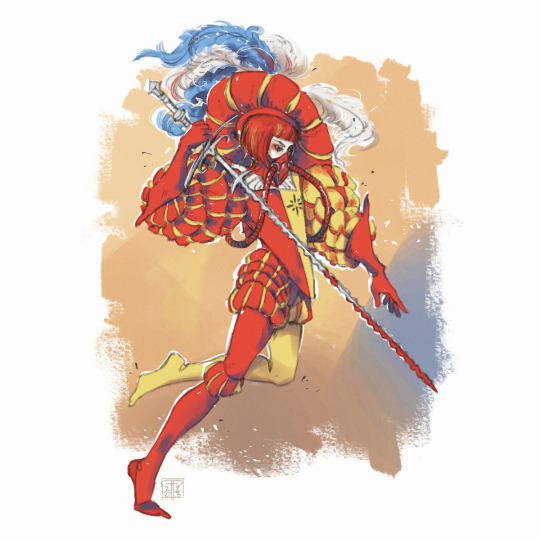
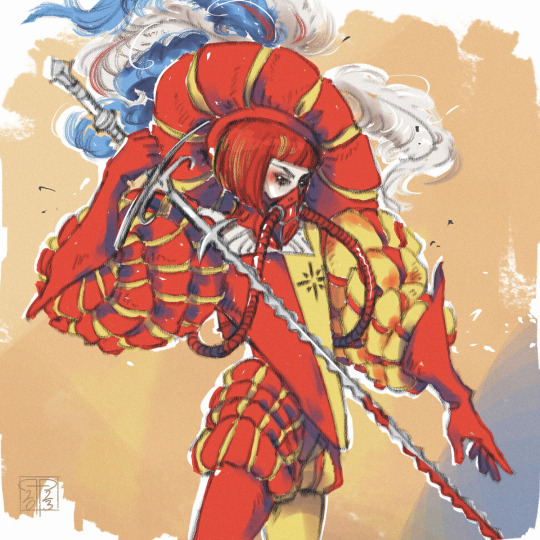
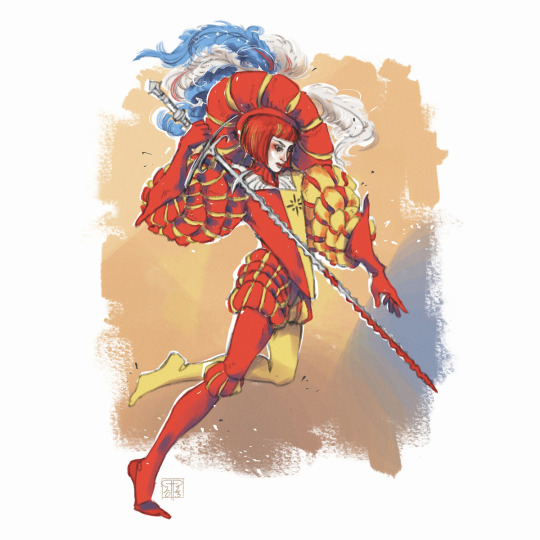
'Fire' | Landsknecht aesthetic
#himmelgrau#artists on tumblr#historical fashion#16th century#1500s#landsknecht#illustration#gas mask#warhammer fantasy#warhammer#zweihander#flamberge#sword#medieval
776 notes
·
View notes
Text

Silk doublet and Pluderhosen, Northern Germany, ca. 1580/90.
Another personal favourite of mine: a pair of late 16th century Pluderhosen combined with a doublet from the same time. While both garments were most likely made by a tailor from the Hanseatic city of Einbeck, they were not meant to be worn together and were just placed like this by the museum for exhibition. While doublet and breeches look beautiful, they were heavily altered during the 19th and 20th century; the doublet´s silk sleeves as well as the red silk lining of the Pluderhosen are later additions and not a genuine 16th century feature.
The front of the doublet is slightly padded to form a so-called "peascod-belly", imitating 16th century breastplates. The buttons are just for decoration, the doublet originally closed with hooks and eyes. The most prominent feature of the Pluderhosen is the massive codpiece, which is lavishly decorated.
#16th century#historical fashion#renaissance fashion#historical costuming#fashion history#16th century fashion#renaissance#history#landsknecht#historical clothing
104 notes
·
View notes
Text
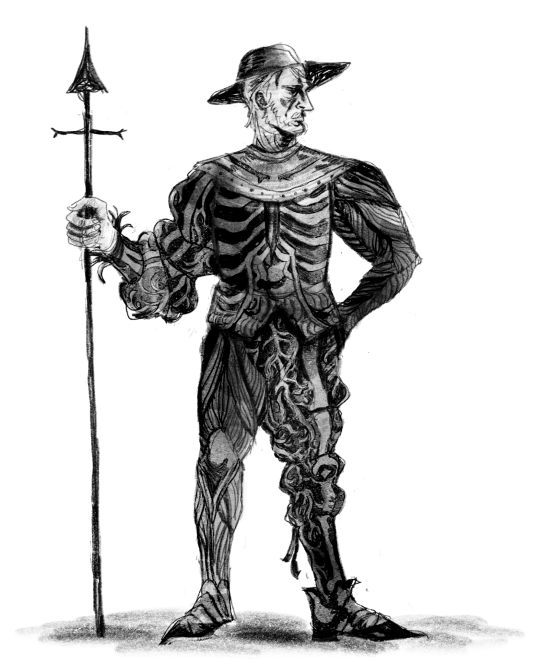
Landsknecht guy with circulatory and muscular system patterns
#i have no idea how to tag this#landsknecht#history#historical clothing#anatomy#uhh#design#character design#clothing design#snart
267 notes
·
View notes
Text

Heyo! I wanted to post our build book somewhere so here we gooo

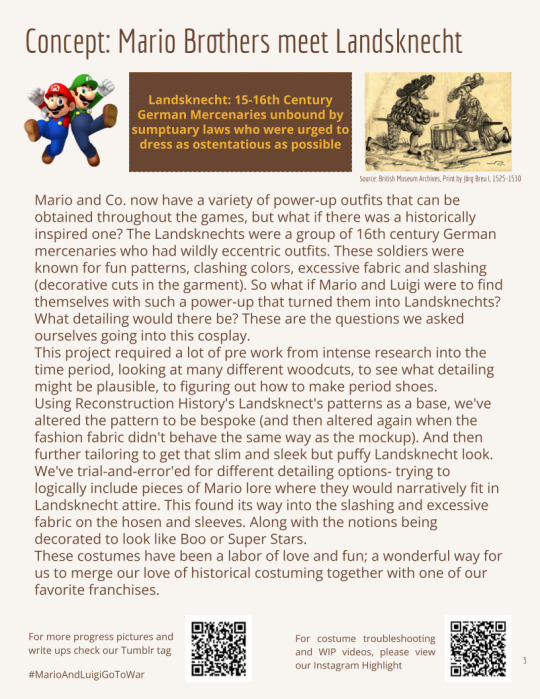
We stole the table of context ontop of finished photo idea from @sarahspaceman who I'm sure saw it from somewhere else. Our cosplays are a little out there so I wanted to give a debrief on just how we came up with this concept along with a way for the judges to find more materials.
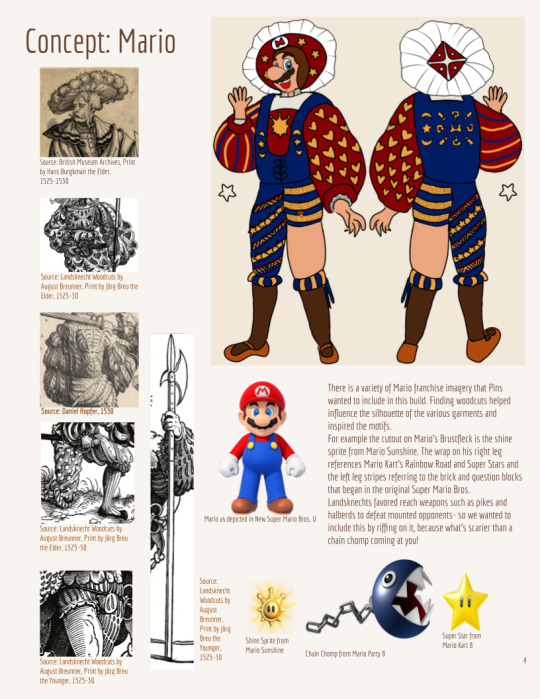

Since this wasn't a thing that existed in any sort of media it was very important to me that the judges would know that we picked from historical imagery, so I wanted to have pictures as examples of what things were supposed to look like. In addition to giving examples from the games of imagery that we used in case they were unfamiliar.

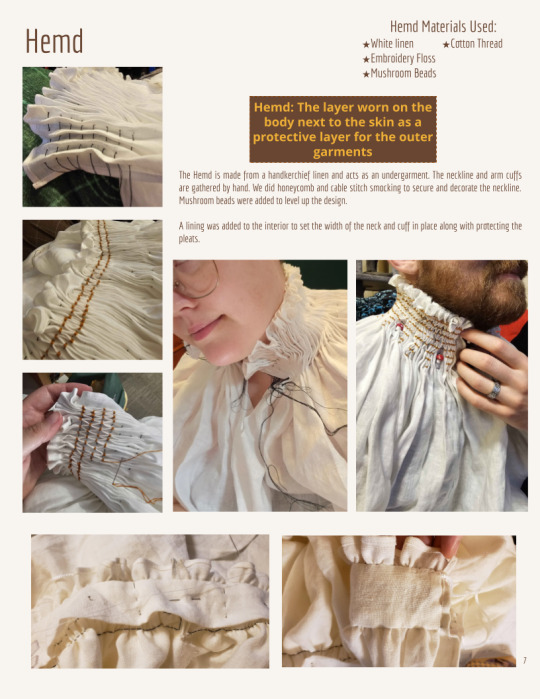
You'll begin to notice a trend of pictures that have their background removed, I just wanted to be able to fit more stuff on the page without compromising space. I also tried to block like sections together to draw the eye easier when reading about certain pieces.
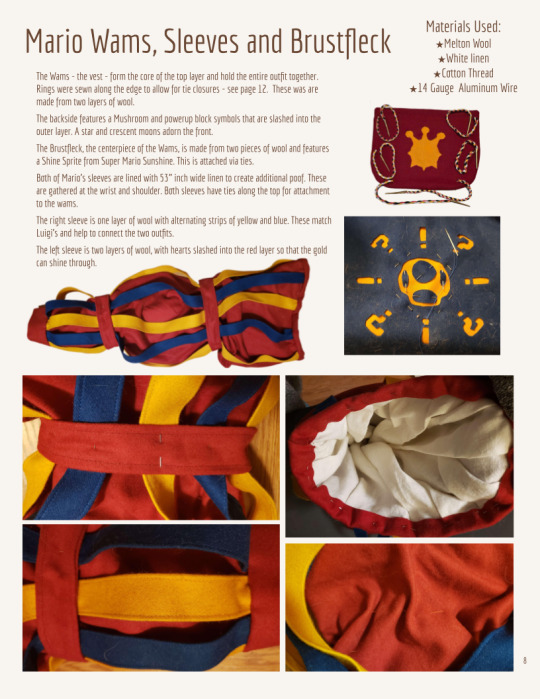

Another thing that I tried to do was keep in mind what the book would look like in physical form, so we tried to mirror where we could.
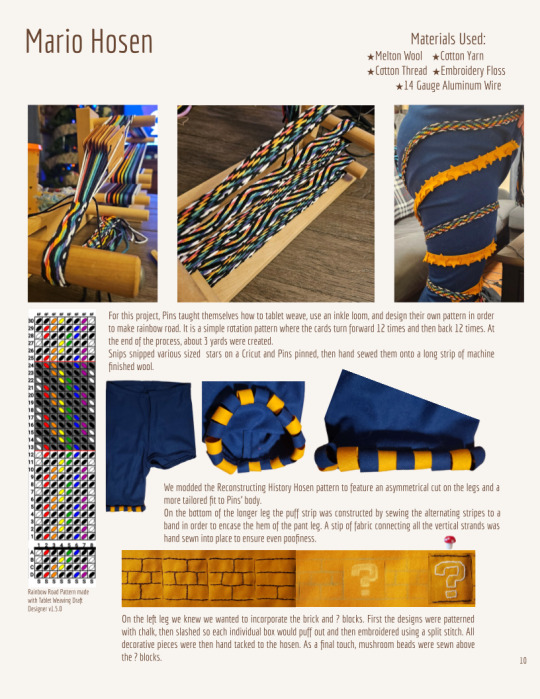

Fun fact, because I had this pattern notated I was able to go back and use it to make more trim when I decided my butt was too bare. Luigi's Hosen page too a log of finagling to get it too look right with the amount of text I wanted to be on there.
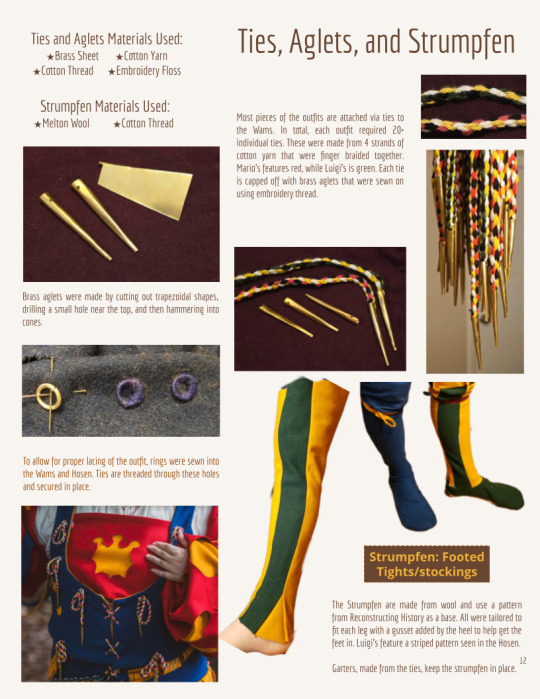
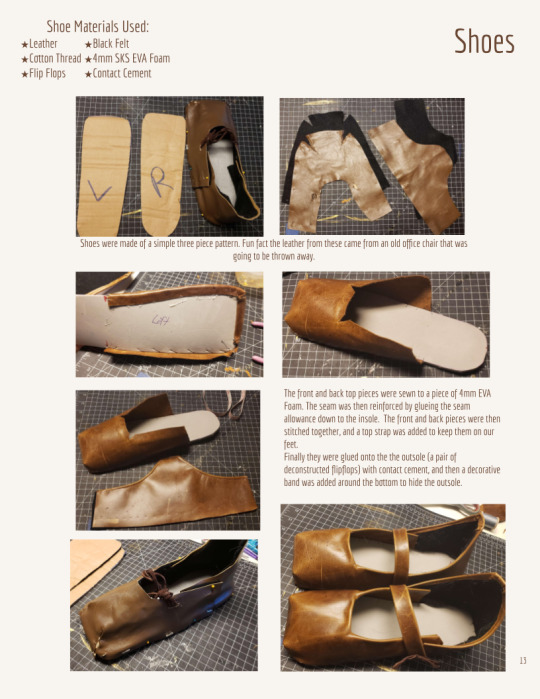
Because we ended up condensing some stuff together, we ended up with an extra page, page 12 became a "here's everything we haven't talked about yet that we want to talk about" By the time we sent off the book for Metro, we hadn't updated the shoes page with their new stained leather- they look much nicer now.
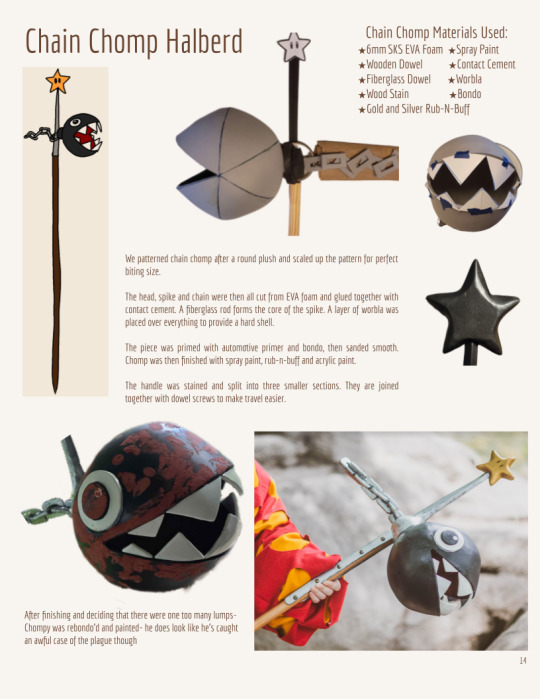

Snip went into a work frenzy and didn't take any photos of him covering the base in worble, but you can take my word for it that it did happen! (I was busy weaving when he was knocking Chain2.0 out) I love love love how the Poltergust turned out. It's a functional backpack and is super sturdy!

Hope you enjoyed our build book! It took us probably about 12 hours to put it together originally and then another 5 to redo the parts of it that didn't make sense in our late night frenzy the first time.
269 notes
·
View notes
Text
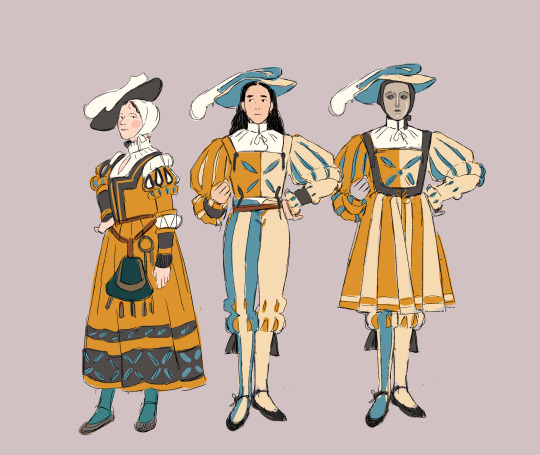

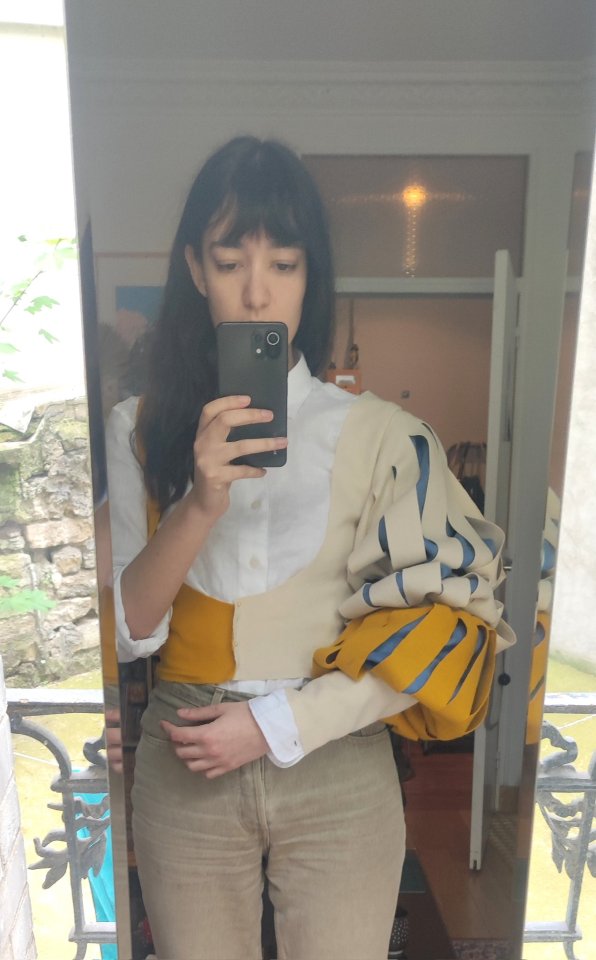
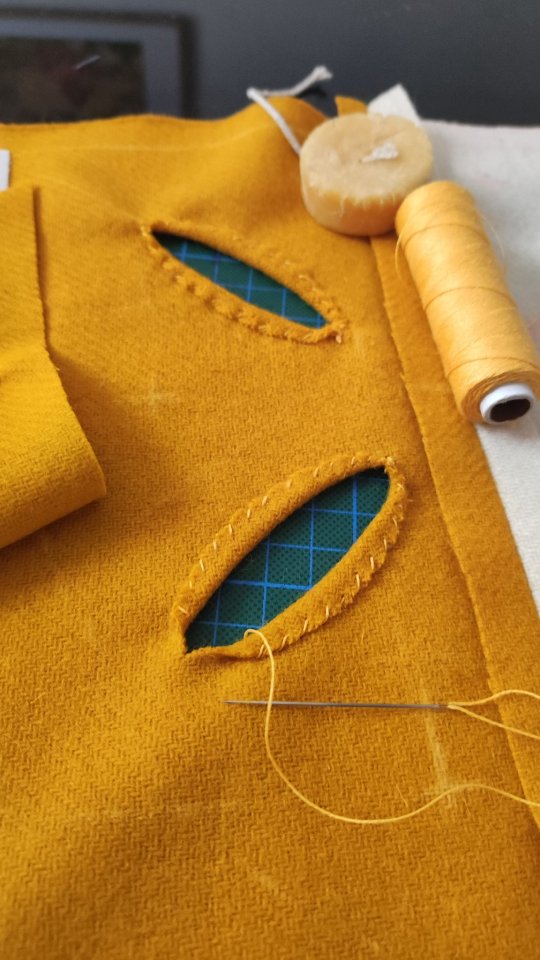

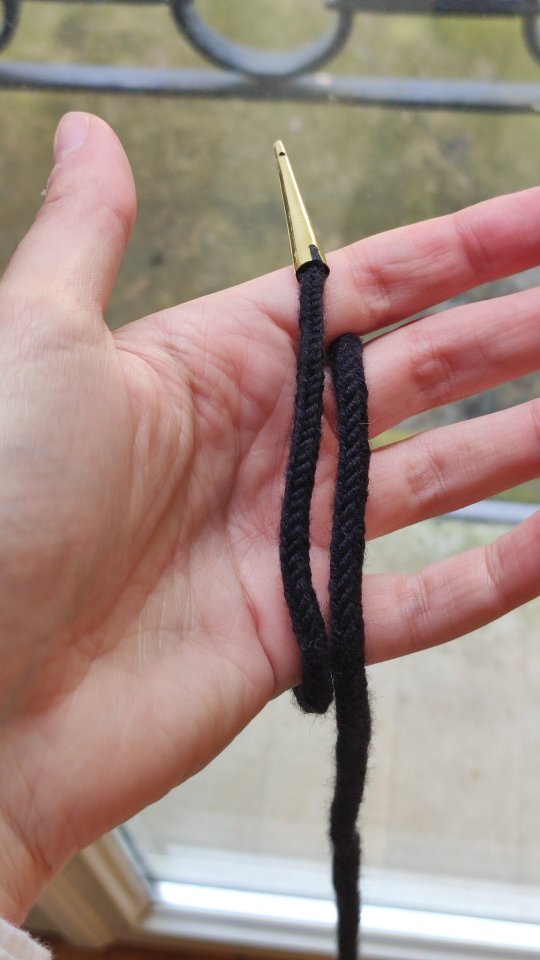
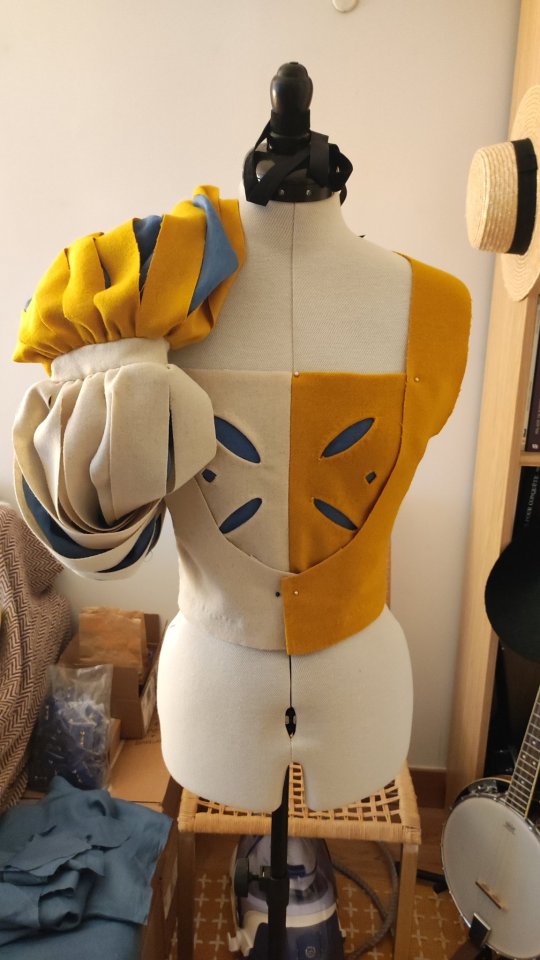




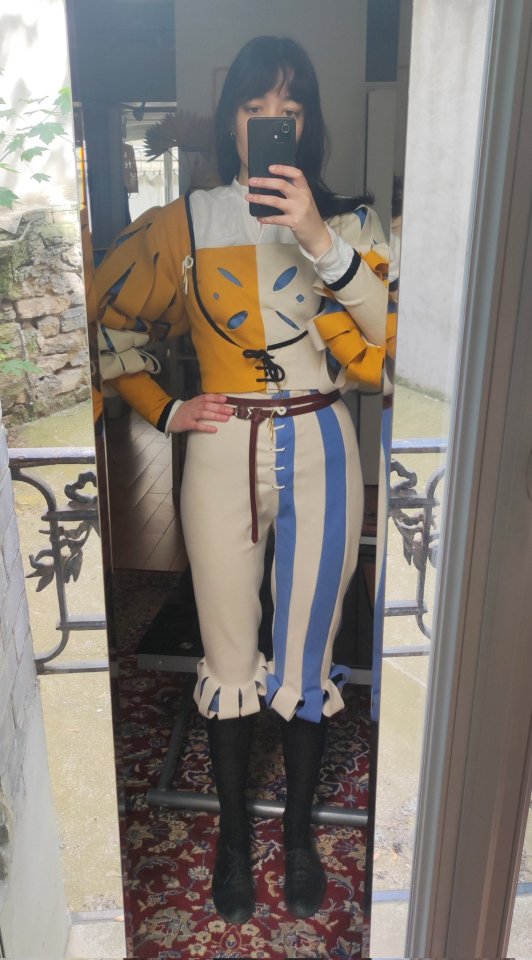
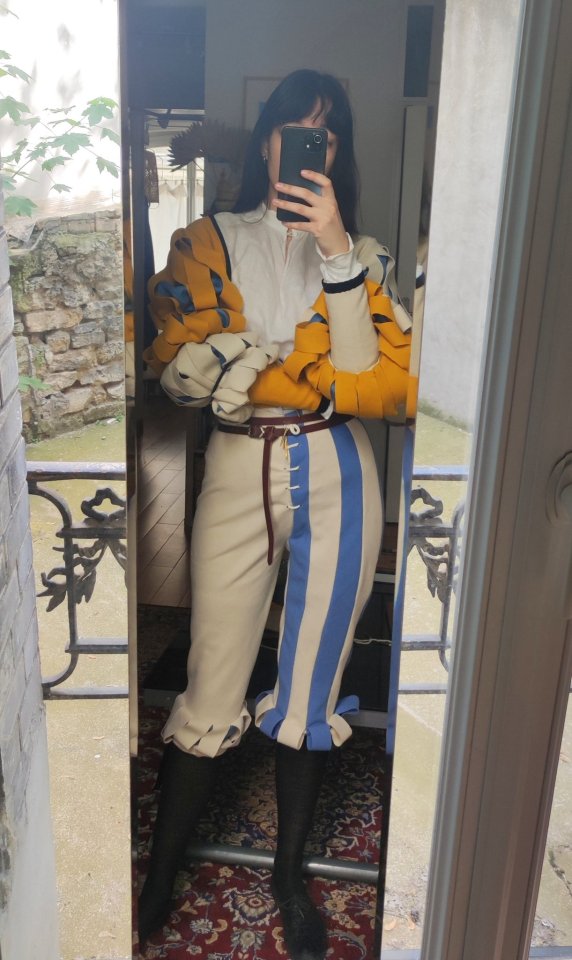

Progress on my current project ! Having some with stripes and slashing this time around. Didn't take any progress photos for the hosen/pants because it broke my brain a little, lol. I also started doing fingerloop braiding for the lacing cords.
I still have to fix a few things on there, including fixation on the brustfleck, and after that onwards to making the hat !
#historical costuming#sewing#16th century#landsknecht#germanic guard#renaissance#it's landsknecht inspired but I also like to think of it as#jestercore#first time draping an drafting everything myself woo !#my art
12K notes
·
View notes
Text




9/10 witches recommend today's new Crittertongue comic.
#possumcollege#dinosaur sheriff#crittertongue#webcomic#comic#webtoon#webtoons#queer comics#art by op#fantasy#urban fantasy#monsters#creatures#cryptids#beastfolk#anthro#goat#sheep#faun#satyr#my characters: silo#my characters: francis#mule#landskplaining#landsknecht#don't smoke#indie comics#cartoonists on tumblr#independent comics
83 notes
·
View notes
Text

The knight of the grapevine, protector of silly monkeys....
A birthday gift for my special boy @askymzbuki
also a more 'vintage option'

#gulo gulo gulo#gulo#MegafunkStuff#art#digitalart#digital#furry#landsknecht#knight#gift#wolverine#cool guy#sketchy#sketch#artists on tumblr#illustration
139 notes
·
View notes